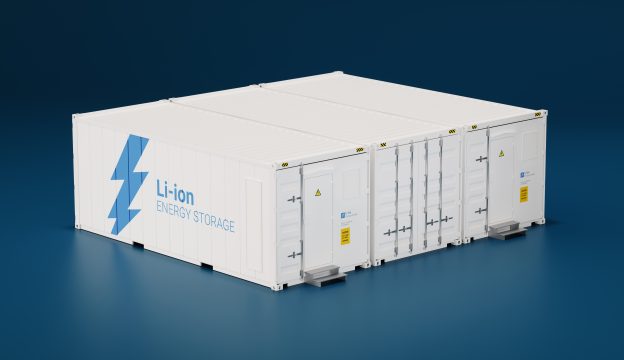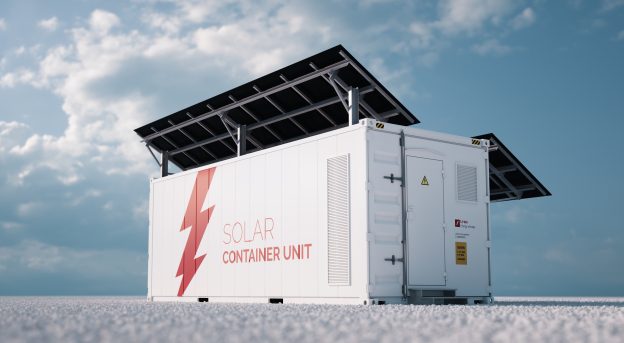On July 31, the National Energy Administration held a press conference to release information on the energy situation and the grid-connected operation of renewable energy in the first half of the year. They also introduced the development of new energy storage and the issuance of green certificates, and answered questions from reporters.
Steady Growth in New Energy Storage Installed Capacity, with Over 44 Million kW in Operation
As of the first half of 2024, the total installed capacity of new energy storage projects nationwide has reached 44.44 million kW/99.06 million kWh, an increase of over 40% compared to the end of 2023. In terms of regional distribution, the Northwest and North China regions account for over 50% of the new energy storage installed capacity in operation, with the Northwest region at 27.3%, North China at 27.2%, Central China at 15.3%, the Southern region at 15.2%, East China at 14.6%, and Northeast China at 0.4%. In terms of technological routes, multiple compressed air energy storage, flow battery energy storage, and sodium-ion battery energy storage projects have been commissioned, exploring network-type energy storage applications and promoting diversified technological development. As of the first half of 2024, lithium-ion battery energy storage accounted for 97.0% of the installed capacity, compressed air energy storage 1.1%, lead-carbon (acid) battery energy storage 0.8%, flow battery energy storage 0.4%, and other technologies 0.7%. Regarding application scenarios, independent and shared energy storage accounted for 45.3%, energy storage paired with new energy projects 42.8%, and other application scenarios 11.9%.
Continuous Enhancement of New Energy Storage Dispatch and Utilization, with Increasing Regulatory Impact
In April of this year, the National Energy Administration issued the "Notice on Promoting the Grid Connection and Dispatch Utilization of New Energy Storage" (National Energy Science and Technology Regulation [2024] No. 26), standardizing the grid connection access of new energy storage and promoting its efficient dispatch and utilization. Since the issuance of the document, we have organized the State Grid, China Southern Power Grid, and Inner Mongolia Power Company to improve rules, refine measures, and continuously ensure implementation.
Since 2024, the dispatch and utilization level of new energy storage has continued to improve, and its regulatory role has increasingly become evident. According to grid enterprises' statistics, the equivalent utilization hours of new energy storage in the State Grid operating area reached 390 hours in the first half of 2024, with about 93 equivalent charge-discharge cycles, increasing by approximately 100% and 86% respectively compared to the first half of 2023. In mature market operation areas such as Shandong and Gansu, the utilization level of new energy storage has further improved. In the operating area of China Southern Power Grid, the equivalent utilization hours of new energy storage in the first half of 2024 reached 560 hours, approaching the total utilization level for the entire year of 2023.
Research has shown that with the increase in installed capacity of new energy storage, its role in promoting the development and consumption of new energy and improving the safety and stability of the power system is becoming more evident, effectively serving energy security. For example, as of the end of June, Shandong Province had an installed capacity of 5.21 million kW of new energy storage, significantly promoting the consumption of new energy in the province. As of July 15, Jiangsu Province had an installed capacity of 5.4 million kW of new energy storage, providing critical support for the peak summer demand.
Next, the National Energy Administration will strengthen planning guidance, enhance pilot demonstrations, optimize dispatch and utilization, improve the standard system, perfect market mechanisms, and continue to promote the high-quality development of the new energy storage industry.
In addition, a practical example of a new type of energy storage call situation was presented.
Shandong Province innovated its utilization methods. During periods of abundant power supply, independent energy storage self-dispatches; during periods of tight power supply and difficult new energy consumption, it accepts unified dispatch from the grid, continuously improving the utilization level of new energy storage. Additionally, pilot projects have been launched to convert paired energy storage into independent energy storage, maximizing the benefits of various storage types. In the first half of 2024, the equivalent utilization hours of new energy storage in Shandong reached 520 hours, an increase of 153 hours year-on-year, consuming 710 million kWh of new energy, a year-on-year increase of 214%.
Jiangsu Province strengthened top-level design, optimized grid connection processes, and coordinated dispatch with dedicated teams, promoting the leapfrog development of new energy storage. On July 15, Jiangsu conducted a concentrated dispatch test of new energy storage, with the province's new energy storage capable of providing about 5 million kW of peak capacity. On July 23, Jiangsu's power load reached a historical high, with an estimated power gap of about 6 million kW. In practical applications, new energy storage provided about 4 million kW of peak capacity, effectively filling the power gap and providing essential support for power supply. According to estimates by Jiangsu Province, the newly commissioned new energy storage this year can effectively save on other power construction investments, potentially helping the grid consume about 3 billion kWh of new energy annually, with significant benefits in various aspects.
Moreover, Zhejiang and Liaoning are exploring new energy storage applications tailored to local conditions. For example, a 200,000 kW/400,000 kWh lithium battery storage station in Zhejiang has alleviated the heavy load on a 500 kV main transformer section, provided conditions for gas turbine maintenance, and promoted the balance of regional power and energy. In Liaoning, a 100,000 kW/400,000 kWh flow battery storage station successfully conducted a black start test of a large-capacity thermal power unit, verifying the feasibility of new energy storage starting thermal power units through the main grid structure, enhancing the resilience of urban power grids.
These cases demonstrate the diversified functions of new energy storage, and it is believed that there will be more vivid practices of new energy storage in the future.
Source:chuneng365







